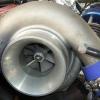BNR34 AWD traction control (atesa + ABS sensors), who has done it ?
Announcements
-
Similar Content
-
Latest Posts
-
This morning I carefully reinstalled the manifold and started looking at a couple of things I need to do. Heat wrap arrived sometime today so I popped into the shed with the missus dishwashing gloves and started wrapping the first half of the dump and the screamer/plumb back. Once I do the second half I'll be able to final fit the turbo and exhaust up. Also pulled the harness out today and started terminating it at the ECU end. A connector is done, just need to run the remaining wires that arent in the harness - 12v, gnd and couple I/O
-
By Dose Pipe Sutututu · Posted
A31 is pretty much the same thing without HiAIDS I mean CAS, no improvement lol. Not to late to send it. -
Thanks for all the replies! I also wanted to ask if wheels that were fitted on Ford Falcons would fit the 350GTs as well? In the area I'm at there aren't that many options for secondhand wheels and new ones here are way out of my budget. From what I've seen, most of the wheels that are available that were fitted on Ford Falcons have an offset of +33 to +36, with a centre bore of 70.5mm whereas the stock 350GT's ones are 66mm, can't seem to find any hubcentric rings that fit that difference though.
-
215/45/18 tyres are probably a little on the low side compared to the factory tyre, it should be closer to a 245/45/19, which will get you about an extra 11mm of height, and should make you speedo read a bit closer to reality. 245/45/19s will be a bit too far the other way and you risk a speeding ticket as your speedo might read slower than your actual speed. 245/40/19s would be correct if you are going to 19in rims, they will give you a similar total diameter to the 245/45/18 tyres.
-
That's something I forgot to put in my list. The aggressive anti-squat in R32 is a f**king menace. I still need to decide if I'm going to drag the subframe out of my car and weld in the GKTech corrector kit. The main reason to dither is the need to switch to spherical joints in the lower arm to account for the twist induced in the rear pivot caused by lowering the front pivot. And yes...we do put better subframes in R32s, and I wish I'd gotten an S14 one instead of an A31 when I did the "take off and nuke it from orbit" HICAS delete all those years ago.
-




Recommended Posts
Create an account or sign in to comment
You need to be a member in order to leave a comment
Create an account
Sign up for a new account in our community. It's easy!
Register a new accountSign in
Already have an account? Sign in here.
Sign In Now